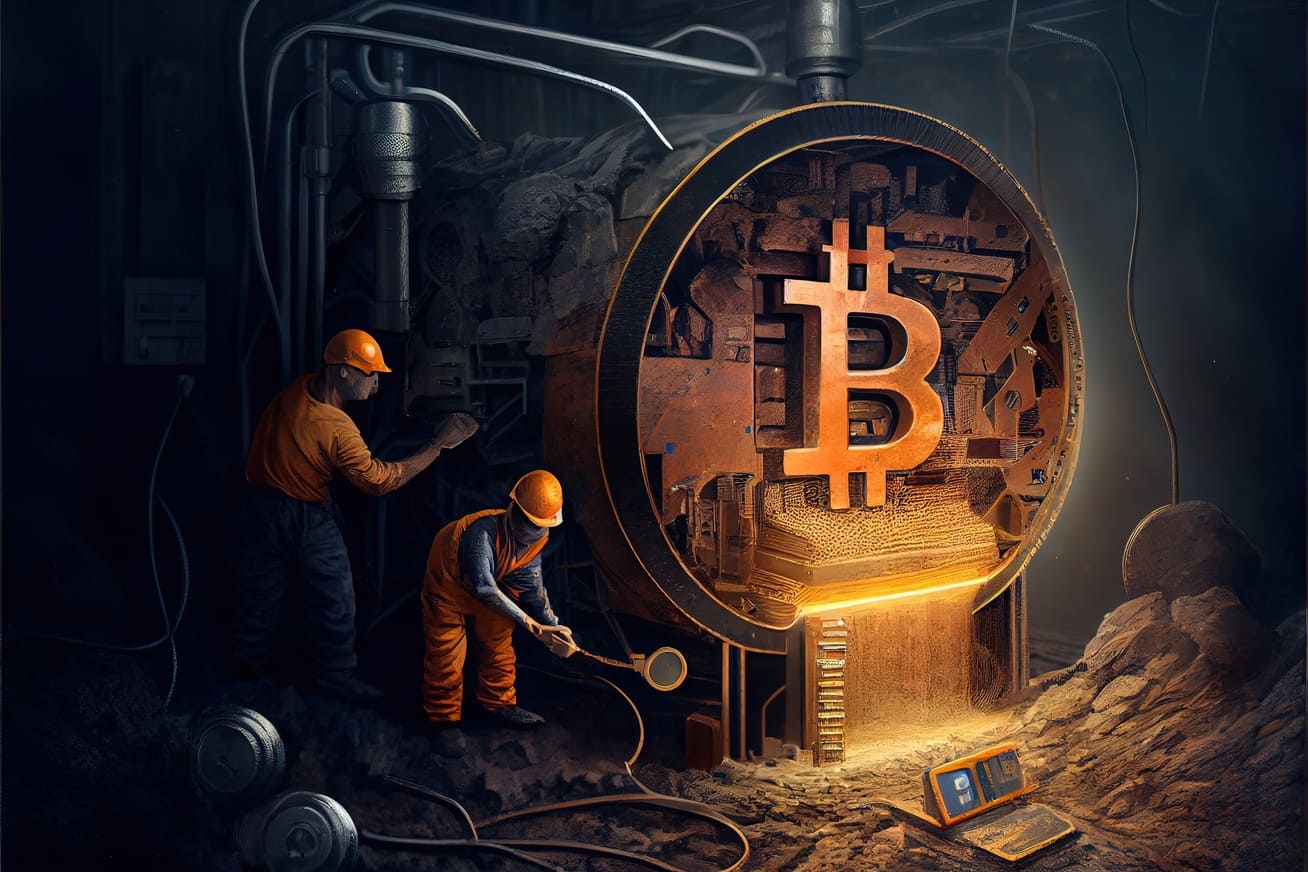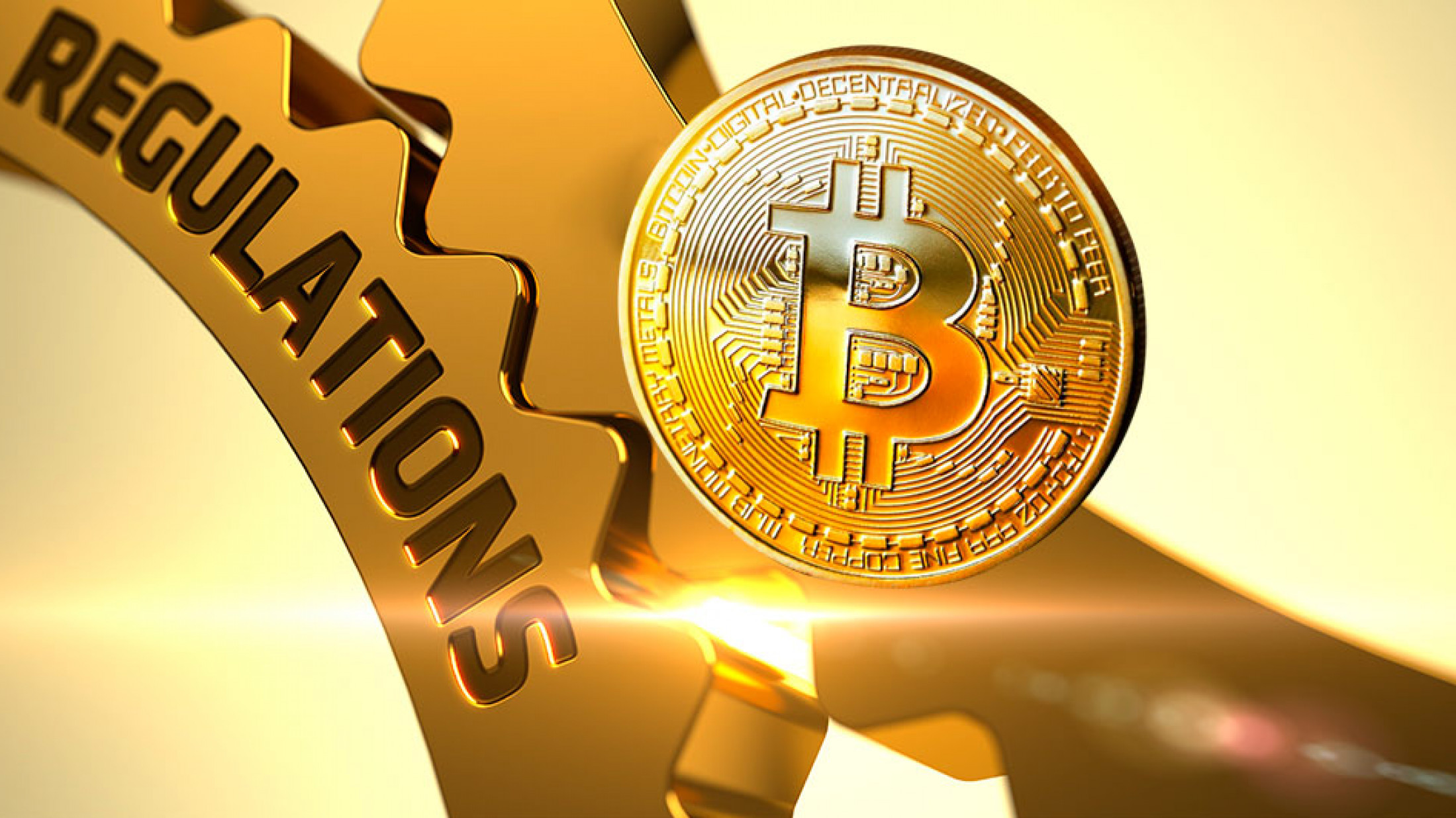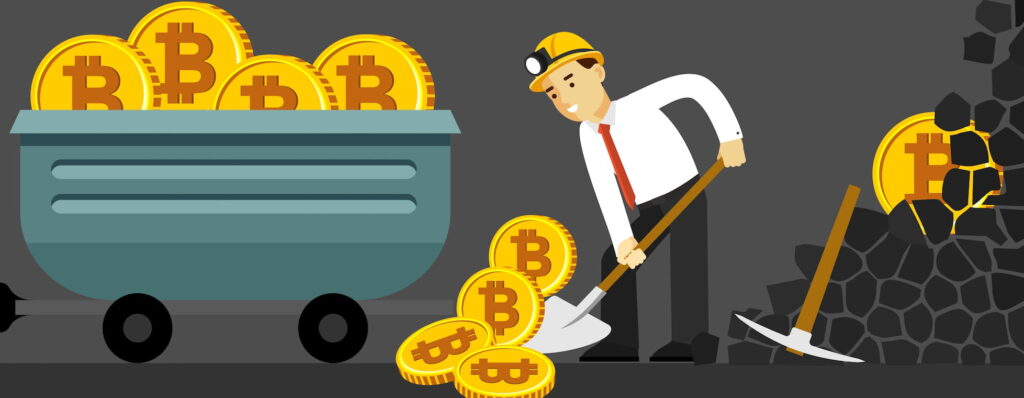The Bitcoin network runs on Bitcoin mining, which is an invisible engine. Bitcoin, which was created in 2009 by the anonymous Satoshi Nakamoto, has changed the way we think about money. It is decentralised, trustless, and protected by cryptographic evidence. This new idea revolves around mining, which ensures the validity of transactions and generates new currencies.
To understand Bitcoin mining, you need to look at its technical structure, the economic reasons behind it, and how the world is changing. Mining has gone from a niche hobby to a complicated, multinational industry as the fight for block rewards heats up and environmental concerns rise.
Bitcoin Mining Process Explained
Bitcoin works on a blockchain, which is a distributed ledger that keeps track of all transactions in blocks that are connected in the order they happened. Miners have to solve a complex cryptographic puzzle to add a new block. This type of verification is called proof of work, and it is a way for everyone to agree on how to keep the network safe against fraud and duplicate spending. Miners start the mining process by taking unconfirmed transactions from the mempool and putting them together into a candidate block.
After that, miners use the SHA-256 hashing method to search for a nonce value that produces a hash lower than the network’s current difficulty target. The first miner to solve the riddle sends their block to the network. The network adds it to the chain if it is valid. The miner that successfully mines a block gets a block reward, which is presently 3.125 BTC after the 2024 halving, as well as any transaction fees that are part of the block.
Evolution of Bitcoin Mining
At first, people mined Bitcoin using the CPUs in their home computers, but the hash problems got harder and harder, making them useless very rapidly. Miners switched to GPUs because they could process data in parallel more quickly. Field Programmable Gate Arrays (FPGAs) eventually emerged, but ASICs (Application-Specific Integrated Circuits), specifically designed for Bitcoin mining, quickly outperformed them.

Mining farms are special facilities that contain racks of ASICs for modern mining operations. These data centres need a lot of infrastructure, such as improved cooling systems, optimised power supplies, and centralised monitoring tools like Hive OS and Braiin OS. Bitmain, MicroBT, and Canaan are some of the biggest hardware companies. Due to trade restrictions and political issues, they are opening more facilities in the US and other countries, but most of their products are made in China.
Rise of Mining Pools
Mining is always competitive since only one miner gets the block reward every ten minutes. This makes solo mining a risky endeavour because payments are not guaranteed. Miners join mining pools to reduce volatility. In these pools, people pool their computing power and receive rewards based on how much they contribute.
F2Pool, AntPool, Foundry USA, and ViaBTC are some of the most famous pools. OOcean, a new player, introduced a decentralised mining pool. With assistance from Bitcoin Core engineer Luke Dashjr and Jack Dorsey, OCEAN allows miners to select their own block templates. This makes Bitcoin more resistant to censorship.
Bitcoin Mining Environmental Impact
Bitcoin mining unintentionally consumes a significant amount of energy. This process converts electricity into security, making attacks on the network too expensive to execute. However, this energy consumption has sparked significant public debate. Mining uses more than 100 TWh of electricity every year, which is more than the power use of certain small countries. Mining farms in rural areas of the US, including Texas and Georgia, are generally close to cheap or extra energy supplies.
Residents in the area have expressed concerns about noise pollution and environmental damage, however. The incessant noise from cooling fans has prompted complaints in Granbury, Texas. In New York’s Finger Lakes region, officials have challenged permits for mining activities that use a lot of carbon. Some mining businesses are trying to have less of an impact on the environment by employing renewable energy or turning waste heat into something useful. Some projects in Iceland, Canada, and even Paris are trying to use mining waste heat to heat homes. This case study shows how mining could work with sustainable development.
Regulation and Mining Economics
Regulation is becoming more and more crucial in the mining business. Federal and state governments in the U.S. are having trouble figuring out how to classify and tax mining. Countries like El Salvador, on the other hand, have fully embraced Bitcoin. They have made it part of their national policy and use geothermal energy from volcanoes to fund mining.

Mining’s economics are still very unstable. Bitcoin’s market price, network difficulty, electricity expenses, and hardware depreciation are all things that affect how much money you can make. Tools for figuring out how profitable mining is, like WhatToMine or NiceHash calculators, assist miners in figuring out if their rigs will make money.
Future of Bitcoin Mining
Because the block reward for Bitcoin halves every four years, transaction fees will soon become the major reason for miners to work. If costs don’t go up enough to make up for this change, it could hurt network security. To solve this problem, Bitcoin developers are looking into layer-two solutions, like the Lightning Network, to make the network more scalable while keeping the base layer secure.
There is also more and more interest in making mining even more decentralised to maintain Bitcoin’s trustless nature. People are still worried about a possible 51% assault, especially if a few pools control most of the network’s hash rate.
Final thoughts
Mining Bitcoin is much more than just a way to get money. It is a decentralised engine that protects the world’s first and most valuable digital currency. Mining is positioned at the nexus of economics, technology, and geopolitics. It has to do with ASIC innovation, hash rate changes, global energy issues, and regulatory changes.
Its growth will affect not only the future of Bitcoin but also how people think about the trade-offs between digital innovation, energy use, and decentralised infrastructure. Bitcoin mining is still one of the most intriguing and sometimes misunderstood things happening right now. It can power rural economies, heat urban homes, or fuel national plans.

